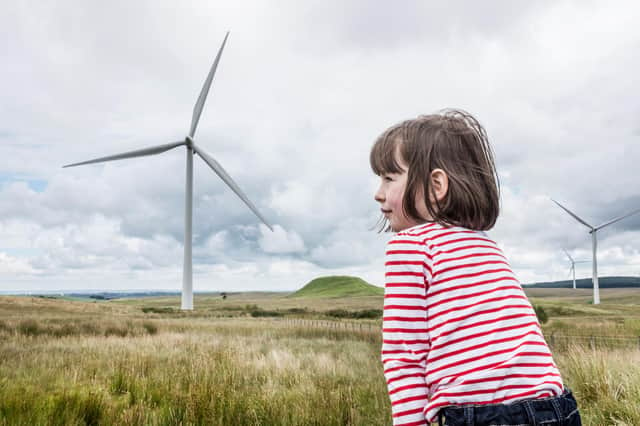Scotland is about to hit its 100% renewable electricity target. It must go further – Richard Dixon


The UK has just experienced over a month when no coal was burned to make electricity, the first time since coal-fired power stations were built. When Longannet power station’s turbines stopped spinning in 2016 that was the end of 115 years of coal burning for power in Scotland.
Around the world, coal-fired power production is in terminal decline and in some places it is already cheaper to build new renewable power generation than to keep running a gas-fired power station.
Advertisement
Hide AdAdvertisement
Hide AdLast year three-quarters of new generation capacity build around the world was renewables, principally solar and wind. Even under pro-coal Donald Trump, renewables will overtake coal for US electricity production this year.
The only major fossil-fuel power station left in Scotland, the gas-fired station at Peterhead, is running at much-reduced capacity and likely to close in the next few years.
We have two nuclear stations, but the two reactors at Hunterston have hardly run in the last two years because of cracking in their cores and are currently shut down, quite possibly never to start again.
We are in the midst of an energy revolution. It moves quite slowly so you may not have understood that the power that flows when you flick a switch today is very different from the power that flowed 30 years ago. And that’s great because taking the carbon out of our electricity is essential in the fight against climate change.
Also essential is substituting electricity from renewables for fossil fuels in heating and transport. Energy industry staff are essential workers in this lockdown period, keeping power flowing. Construction work on new renewable energy schemes has stopped for now, but it will surge back.
I remember helping persuade the energy minister in 2004 to set Scotland’s first renewable electricity target at 17.5 per cent by 2010, five per cent more than currently in production, a target her civil servants told her was “very brave”. I had argued for a target of 25 per cent and indeed that was the figure when we did get to 2010. By 2011 it was a third.
Today, renewable energy produces 90 per cent of the electricity we use in Scotland and more of it includes ownership by communities. Because of planning delays and lack of support from the UK Government, we won’t quite reach the target of 100 per cent by the end of this year but big schemes already under construction and in the pipeline mean it won’t be long before we do.
Of course some renewable energy is different from traditional fossil-fuelled energy. While tidal energy is as predictable as, well, the tides, wind and wave power are less so.
Advertisement
Hide AdAdvertisement
Hide AdSo when we reach the 100 per cent target we will have the capacity to make all the electricity we need but some days we will be making a thumping great excess and exporting it to England and Northern Ireland, and some days we will be importing power through those same connections. There are plans for a connection to Norway, to create an even more balanced system by linking to their huge hydro-power resources.
We shouldn’t stop when we reach the 100 per cent target, we should power straight through, and invest in both more renewables and more energy storage in a big way, so that on every day we are making all of our electricity from wind, wave, solar, tidal and hydro-power, and on most days we are making money by selling the surplus to the rest of the UK and beyond.
We’ll be talking to the manifesto writers for the 2021 Scottish election to see who has a strong vision for the next step in Scotland’s energy transition.
Dr Richard Dixon is director of Friends of the Earth Scotland
A message from the Editor:
Thank you for reading this article on our website. While I have your attention, I also have an important request to make of you.
With the coronavirus lockdown having a major impact on many of our advertisers - and consequently the revenue we receive - we are more reliant than ever on you taking out a digital subscription.
Subscribe to scotsman.com and enjoy unlimited access to Scottish news and information online and on our app. With a digital subscription, you can read more than 5 articles, see fewer ads, enjoy faster load times, and get access to exclusive newsletters and content. Visit www.scotsman.com/subscriptions now to sign up.
Our journalism costs money and we rely on advertising, print and digital revenues to help to support them. By supporting us, we are able to support you in providing trusted, fact-checked content for this website.
Joy Yates
Editorial Director
Comments
Want to join the conversation? Please or to comment on this article.